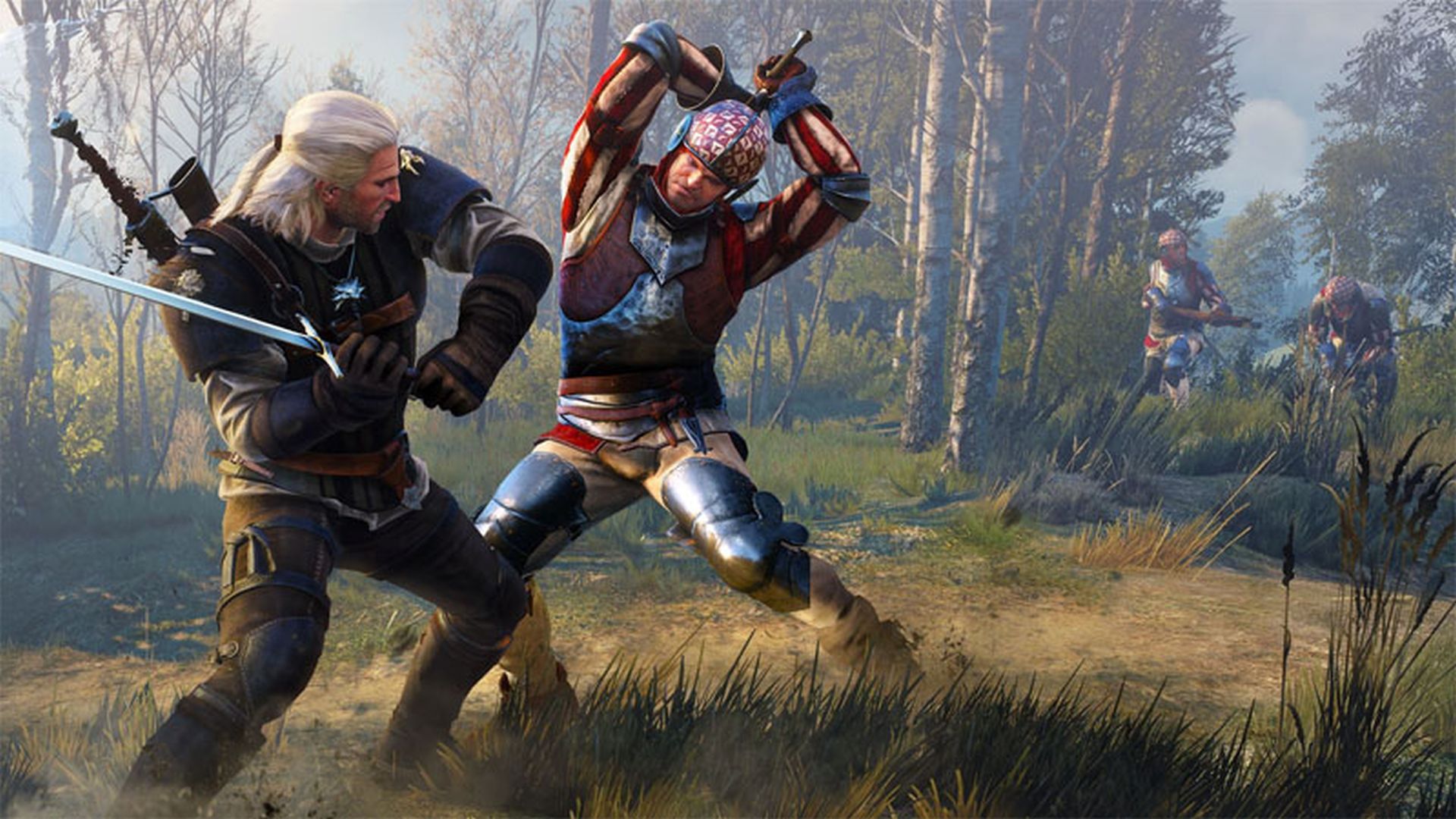
There's an awful lot to see in The Witcher 3 PS5 and Xbox Series X update. 'New-gen' graphics are the most apparent change, of course, and The Continent looks more vibrant than ever. A new quest brings several of Netflix's efforts into CD Projekt Red's world. There's a more immersive HUD, and new camera options to place your perspective firmly within the rolling fields of Temeria. But what I've been looking forward to the most is the update's new sign-centric combat.
In Sapkowski's books, Witchers can perform minor magic spells thanks to the use of 'signs', simple casts with specific goals. Nine such signs are mentioned in the wider Witcher universe, but five are available in the games, and in the launch version of The Witcher 3, Geralt can swap between them by using a radial menu that drastically slows time, allowing the user to choose their next move carefully. In the update, that system sits alongside another, much faster menu - while the battle continues in real-time, button prompts allow you to swap between spells without pausing, just by using the controller face buttons.
It's a system that's initially a little difficult to make the most of. Having played hundreds of hours of The Witcher 3 in the past, I opted, perhaps foolishly, to skip the tutorials in Kaer Morhen, forgetting that I'd have new combat toys to play with. As a result, I struggled to find the new menu, especially since muscle memory meant that I kept defaulting to the traditional radial menu every time a ghoul leapt at me. Eventually, as a trio of drowners circled nervously but didn't attack, I discovered the button prompts and could actually get to work.
Fighting flow


I felt the change immediately. The Witcher 3's combat is genuinely transformed by the new system. Changing signs is no longer a way to take a sneaky breather, it's something that requires you to examine the rhythm of a fight in order to find a split second to adjust your approach. It can feel more immediate; as long as you're playing around the time it takes Geralt to 'recharge', you can swap to the correct sign for a specific moment, rather than holding on to something you're expecting to be useful in the next few seconds. There's even an added layer of expertise - not only does the new system require some extra muscle memory to ensure you're using the right spell, but it knits everything together, making it feel like you're actually reading the entire battle in a way that builds on Geralt's balletic, but relatively simple combo-driven swordplay.
So far, I've not left White Orchard, so there are some limits to how much I've been able to take from the system. In the tutorial-esque zone at the beginning of The Witcher 3, combat is relatively scarce, a couple of low-level skirmishes and minibosses aside. That said, the system worked perfectly in the battle against the Hovel noonwraith. It's a fight in which the often clunky Yrden spell, key to battling ghosts and spirits, is crucial. But noonwraiths hit quite hard, with awkward, lurching attacks, making defensive spell Quen very useful. Under the old system, weaving back and forth between the two was awkward even before you factored in trying to make the most of your silver sword.

"Once you bring the new system to bear alongside the tighter camera and enhanced visuals, it's combat, not the new-look Continent, that excites me most about the upgrade."
Now though, it's two button presses. When the wraith backs up, a quick combo casts that defensive spell, ready for the next advance. Then, as the spirit lurches forward, it's trivial to drop a magical trap and dodge out of the way without interrupting the action for a moment. It used to be that I felt the need to explain Geralt's apparent ability to manipulate time on his superhuman reflexes. Now, he brings the master swordsman fantasy to life, drawing on the extra tools at his disposal - not some external time trickery - to dominate the battle.
I'm very early in my new playthrough, which means that my signs aren't particularly powerful and the downtime between them is longer than I'd like. I know, however, how potent they can become; in my first playthrough, Quen wasn't just a temporary block but a rejuvenating shield; Igni wasn't a simple blast of flame, but a gout of fire streaming from Geralt's fingertips. With the new system stitching those features so neatly into the White Wolf's repertoire, I'm already planning out a Sign-focused playthrough - swordplay won't be irrelevant, but I know that there's plenty that I can achieve with a few cunningly-timed and fully-charged Aard blasts that my steel sword can only dream of.
Sign up to the GamesRadar+ Newsletter
Weekly digests, tales from the communities you love, and more
Once you bring the new system to bear alongside the tighter camera and enhanced visuals, it's combat, not the new-look Continent, that excites me most about the upgrade. All of the changes are optional, so you can still play the way you want, but I'm about to go spellcasting my way from Novigrad to Toussaint with barely a moment's downtime.
Want to catch up before you dive back into The Continent? Here's our list of The Witcher 3 tips.

I'm GamesRadar's news editor, working with the team to deliver breaking news from across the industry. I started my journalistic career while getting my degree in English Literature at the University of Warwick, where I also worked as Games Editor on the student newspaper, The Boar. Since then, I've run the news sections at PCGamesN and Kotaku UK, and also regularly contributed to PC Gamer. As you might be able to tell, PC is my platform of choice, so you can regularly find me playing League of Legends or Steam's latest indie hit.


